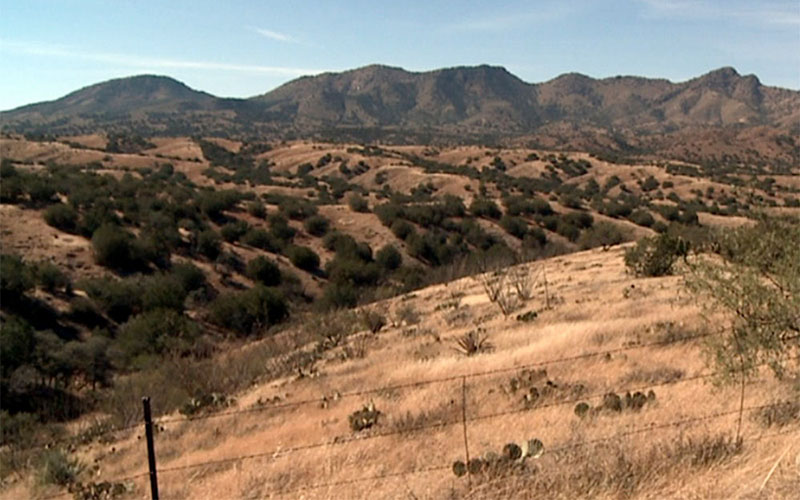EDS: UPDATES with comment from Hudbay in grafs 6-7. No other changes.
- Slug: BC-CNS-Rosemont Ruling,670 words.
- 2 file photos available (thumbnails, captions below).
By Liam Coates
Cronkite News
WASHINGTON – A federal appeals court ruled Wednesday that regulators were wrong to conclude that parts of Pima County targeted for a copper mine are critical to the preservation of endangered jaguars.
The ruling by a three-judge panel of the 9th U.S. Circuit Court of Appeals overturns a lower court decision and revives hopes for the Rosemont Copper mine, which supporters said would bring hundreds of jobs and billions of dollars in revenue to the region.
But in a dissent, Judge Holly Thomas said the record “amply supports” the government’s finding that the land in Pima County is “critical to the conservation of the jaguar as it faces threats elsewhere in its range.”
Opponents of the mine called the circuit court’s ruling a “disappointing decision that puts endangered jaguars at risk.”
“We’ll do everything possible to keep this critical habitat protected” for jaguars and other rare animals in the region, said Marc Fink, a Center for Biological Diversity attorney, in an emailed statement.
But Hudbay Minerals Inc., the Canadian mining company behind the Rosemont mine, said it was pleased the court had found that the U.S. Fish and Wildlife Service “erred in its designation of the northern Santa Ritas as jaguar critical habitat.”
“The lands in question are not, in any normal sense of the word, ‘essential’ to the survival of the jaguar species,” a Hudbay spokesperson said in an emailed statement. “The critical habitat designated in the United States accounts for 0.04% of all jaguar habitat and the species is not considered endangered on a worldwide basis.”
It is the latest turn in a 16-year push to develop the open-pit mine in the northern Santa Rita Mountains. The Center for Biological Diversity sued when the U.S. Fish and Wildlife Service ruled in 2016 that the mine could proceed, even though it sits on land that had been designated as critical habitat to the survival of the jaguar.
The federal district court agreed, ruling that even though there is scant evidence that jaguars inhabit the region, the lands in question still qualified as “unoccupied critical habitat.”
But the appeals court said the lower court’s ruling was made in error. It said that in order for unoccupied land to be considered critical, it has to be essential to the survival of the species, not “merely beneficial to such efforts.”
The court noted that less than 1% of the jaguar’s range is in the U.S. and that the animal’s recovery is “entirely reliant on the 99+% of its habitat found south of the international border.”
“Habitat that ‘may (or may not) be important to the conservation of jaguars’ definitionally is not essential to conservation,” said Judge Danielle Forrest in her opinion for the court. “To conclude otherwise would render meaningless Congress’s limitations on the government’s authority to designate land as unoccupied critical habitat.”
Thomas disagreed, saying that even though the Pima County land was not core territory for the species, “areas at the periphery of the jaguar’s range play an important role in ensuring that the jaguar can not only survive but also recover.”
Thomas did agree with the majority that the area was not occupied by jaguars, despite photographs of a lone male in the region as recently as 2013. The appeals court said the claim that the area was occupied by jaguars was “based on irrelevant photographs from decades after the jaguar was listed as endangered and a single timely sighting from a different mountain range.”
The Fish and Wildlife Service did not respond to a request for comment. But Fink said in his statement that it is wrong to assume jaguars are not present in Arizona.
“There’s documented evidence of a jaguar in the northern Santa Ritas Mountains from as recently as 2015, including at the site of the proposed Rosemont mine,” his statement said. “Jaguars and the rare frogs, snakes and fish that call these mountains home can’t be sacrificed for mining company profits.”
The mine could be third-largest in the U.S. and has been called a “critical economic and employment driver” for the region. It would directly employ 2,500 people during the construction phase and 500 when in operation, according to reports, with the company claiming that workers at the facility will earn, on average, more than double the Pima County median income.
But critics note that the mine will consume enormous amounts of water and point to reports of the troubled history of water pollution from copper sulfide mines.
For more stories from Cronkite News, visit cronkitenews.azpbs.org.
^__=
Web links:
_ CBD v. USFWS: https://cdn.ca9.uscourts.gov/datastore/opinions/2023/05/17/20-15654.pdf
_ District court order: https://docs.justia.com/cases/federal/district-courts/arizona/azdce/4:2017cv00475/1055071/291
_ Rosemont challenges: https://www.courtlistener.com/docket/6305716/248/center-for-biological-diversity-v-united-states-fish-and-wildlife-service/
^__=
An endangered jaguar captured by a remote camera in southeastern Arizona, where critics say a proposed copper mine would threaten the species. But a federal appeals court Wednesday rejected the claim that disturbing land in Arizona – less than 1% of the jaguar’s range – would hurt the species’ chances for recovery. (File photo courtesy Conservation CATalyst and Center for Biological Diversity)
The Rosemont copper mine would be situated on land in the Santa Rita Mountans, which includes territory that has been deemed critical habitat for the endangered jaguar. (File photo by Rob Scott/Cronkite News)

